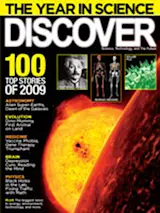To forecasters trying to anticipate extreme weather and avert disasters, the 2004 hurricane season looked like nature thumbing her nose at us. That year, 15 major storms developed in the North Atlantic—including Hurricane Ivan, which caused $14 billion in damage in the United States. And yet the best models had called for a quiet season because it was a year of El Niño, a recurring pattern of warm water in the eastern Pacific Ocean. That pattern is associated with lower-than-average tropical storm activity in the North Atlantic. Atmospheric scientist Peter Webster at the Georgia Institute of Technology set out to determine what went wrong, and now he has some answers.
Last spring, Webster discovered that his colleagues had lumped together two distinct weather patterns under the name of El Niño. Those patterns “have a very, very different impact on the tropical climate and, most important, on hurricane formation,” he says. The divergence appears to be a recent phenomenon, which explains why researchers were unaware of its effects. During a typical El Niño, the Pacific Ocean warms up in a long band that extends from the coast of South America toward Polynesia. The second, less familiar pattern involves a more isolated, extensive patch of warmer water in the central Pacific.
After examining more than six decades’ worth of ocean surface temperatures and tropical storm data, Webster and his collaborators realized that the newly identified warming in the central Pacific produces more hurricanes than a traditional El Niño. It did not show up in the data until three decades ago, leaving Webster unsure whether the new weather pattern is part of a long-term oscillation or a result of climate change. Regardless of the root cause, though, the discovery of the central Pacific hot spot should lead to better hurricane predictions and fewer surprises.














